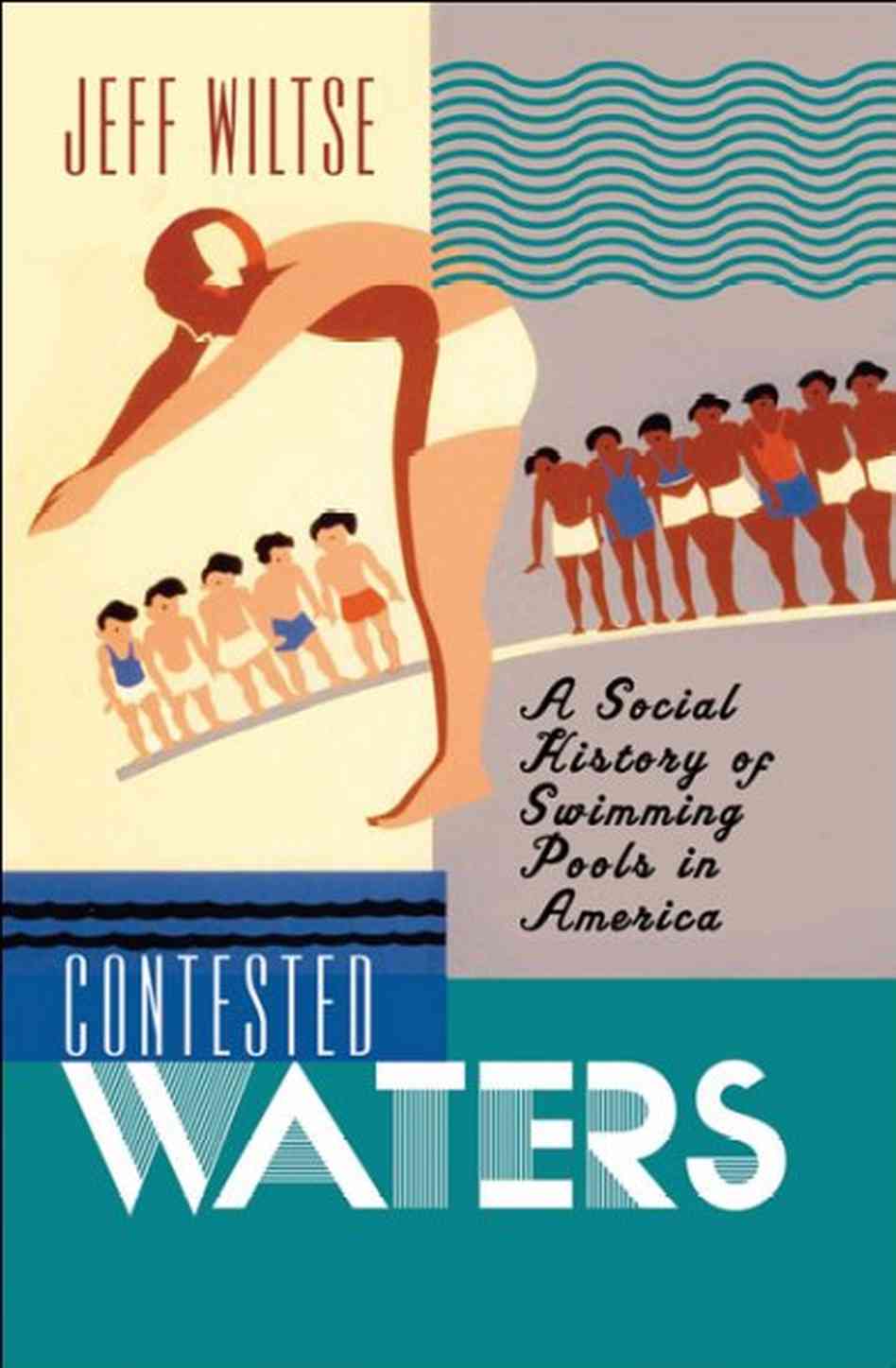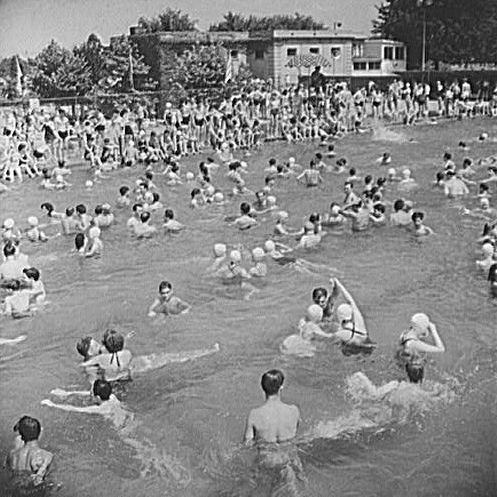(Almost) everybody in the pool! Plunge into the racial prejudice and sexual tension that set water boiling in America’s public pools
Americans’ long and sweaty love affair with municipal swimming pools is on the wane, but it’s left behind a sort of sordid legacy.
Jeff Wiltse, a professor of US history at The University of Montana, has made a splash with his dive into the history of pools, Contested Waters.
In a recent interview, he tells us how these swimming holes evolved into a simmering hotbed of controversy.
How did swimming evolve as a recreational activity?
A lot of people are somewhat horrified to learn that bathing – washing the body – was not commonplace in the United States in the early nineteenth century.
Also, there were not many people who swam. Most people were afraid of the water and associated it with death and drowning.
Pools were not unisex at the very beginning
By the 1920s, pools generally became gender-integrated but racially segregated. Pools were perceived to be intimate spaces, both physically and visually.
Racial prejudices at the time made it an anathema for white women to swim with black men.
 It’s easy to see how public pools became sexual hotspots.
It’s easy to see how public pools became sexual hotspots.
Pools became immensely popular because they were sites of exhibitionism and voyeurism. This at least in part accounts for the rising popularity of pools.
Pools became sexually charged public spaces. In all other public venues, you would interact with anonymous others but be fully clothed.
Also, during the 1920s and 1930s, swimming suits shrunk in size. Women and men began to show more and more of their bodies.
The attempt to segregate public pools was a futile exercise that almost went down the drain.
In the northern states, pools became racially desegregated in the late 1940s and continuing to the mid-1950s.
There was violence. There were many instances when a public swimming pool became desegregated, whites gathered and literally beat blacks who tried to enter that pool.
The more common outcome was that whites abandoned municipal pools that blacks had access to. As soon as blacks gained access to a municipal pool, whites stopped swimming at that pool. They either went to other municipal pools that blacks did not have access to, or they joined private club pools.
Hence the advent of the suburban private swim clubs
In the early-to-mid-1950s, the tremendous growth of private club pools, particularly in the suburbs, was in a large part a reaction to the court-ordered racial desegregation of public pools.
At that point, private clubs were legally able to discriminate against others: whites only.
It became a strong incentive in many suburban communities to fund private club pools rather than to fund public pools. That’s because public pools at that time made it clear that they had to be open to all races.
At the same time, backyard swimming pools increased in popularity.
Backyard swimming pools in the late 1950s and early 1960s were enabled by growing prosperity, but I attribute it more to a general desire for privacy.
Even a private club pool is not very private. People in some ways wanted to get away from the community and get away from society. The backyard of a suburban home provided that refuge.
The state of the municipal swimming pool today is rather shallow.
Since the 1960s, municipal pools have been in decline. Cities have chosen to close many existing pools. There have been comparatively few new pools being built.
Pools have fallen into dilapidation. This is especially true in cities like Pittsburgh, Detroit, St. Louis, Youngstown, Ohio — the older industrial cities are where this is most prevalent.
In an economic downturn, when budgets become strained, city pools are among the first to go. They’re only good for four or five months out of the year and relatively expensive.
Americans today have much less access to public swimming facilities than previous generations of Americans. This is especially true in inner cities.
The number of swimming pools in the suburbs has continued to increase. Now more than before, access to swimming pools is divided among class lines. Poor and working class people have very limited access to swimming pools.
Another trend has been to not build traditional swimming pools. When communities do fund water recreation facilities, they are increasingly choosing to construct water playgrounds.
They have, for instance, lily pads that sprout water and spray guns and buckets that fill up, but not the traditional pool.
There is not actual swimming going on. The children using them aren’t learning how to swim. Swimming pools were a uniquely sociable and interactive public space.
###
Buy this boiling book here .
.

